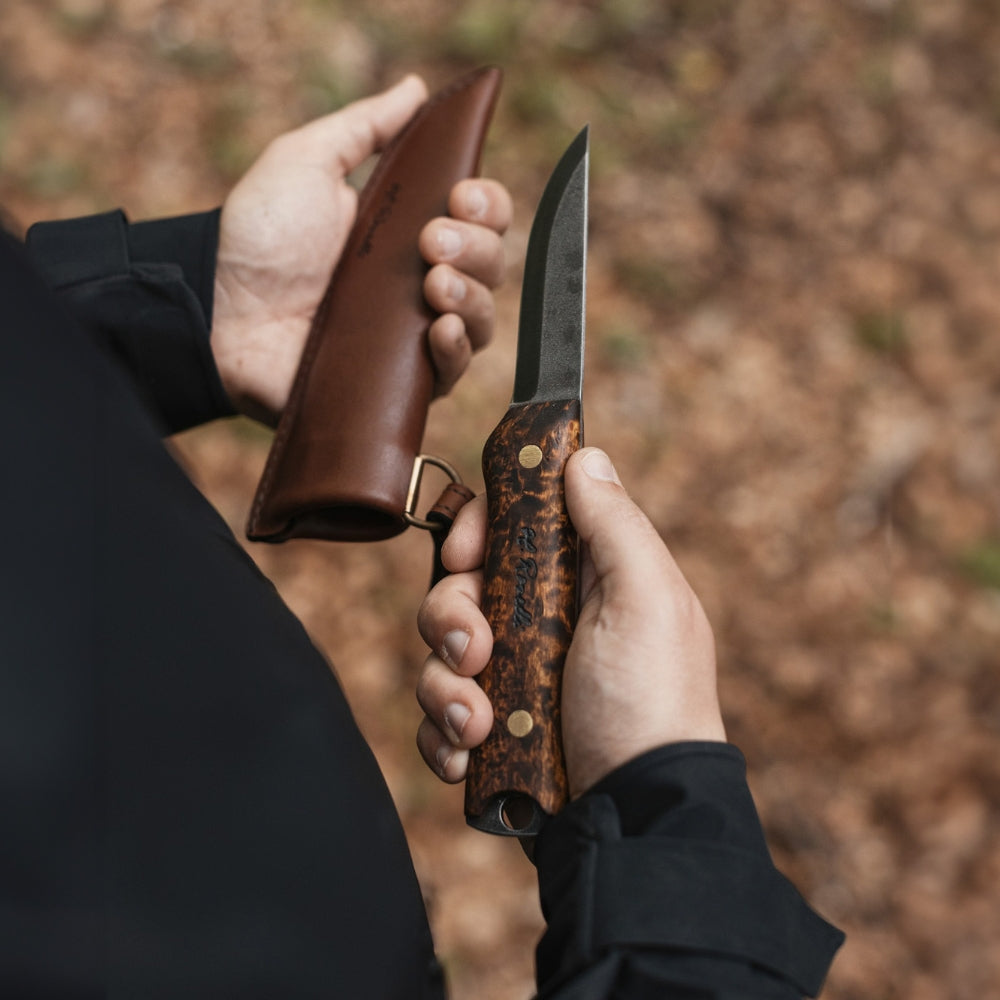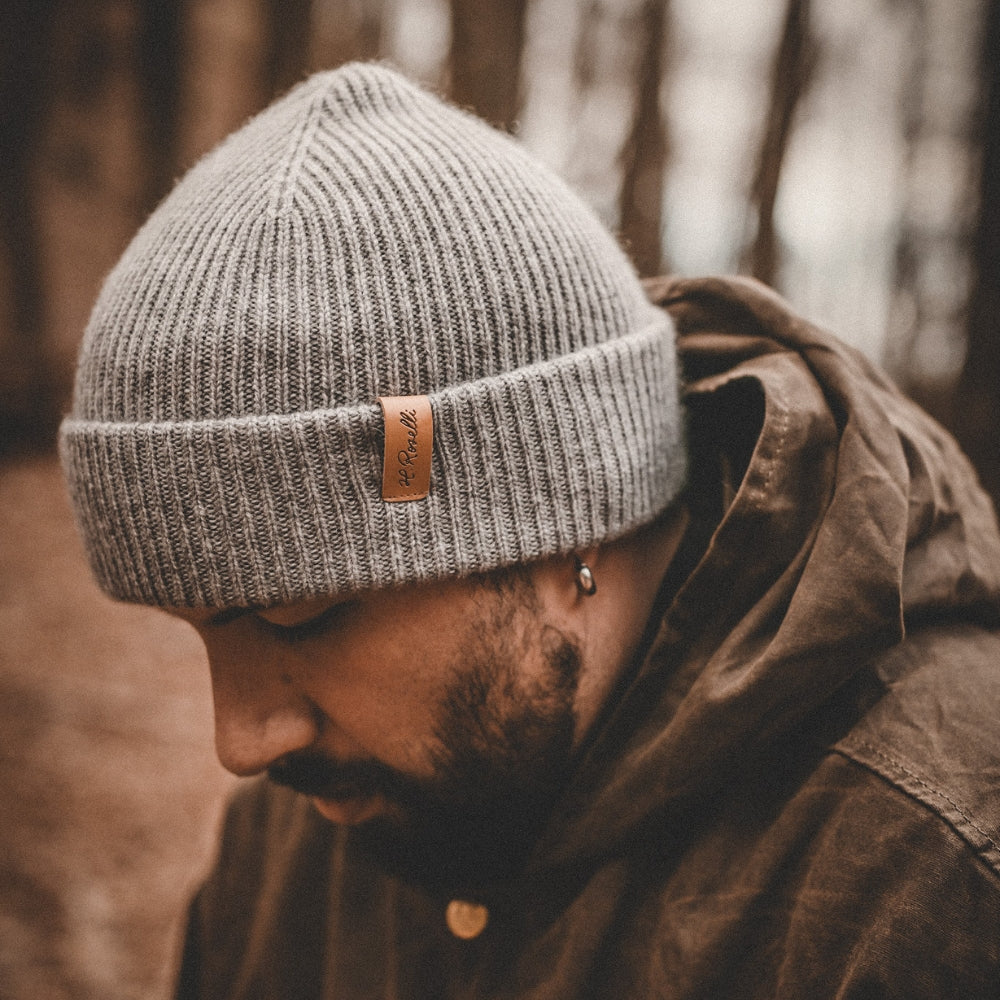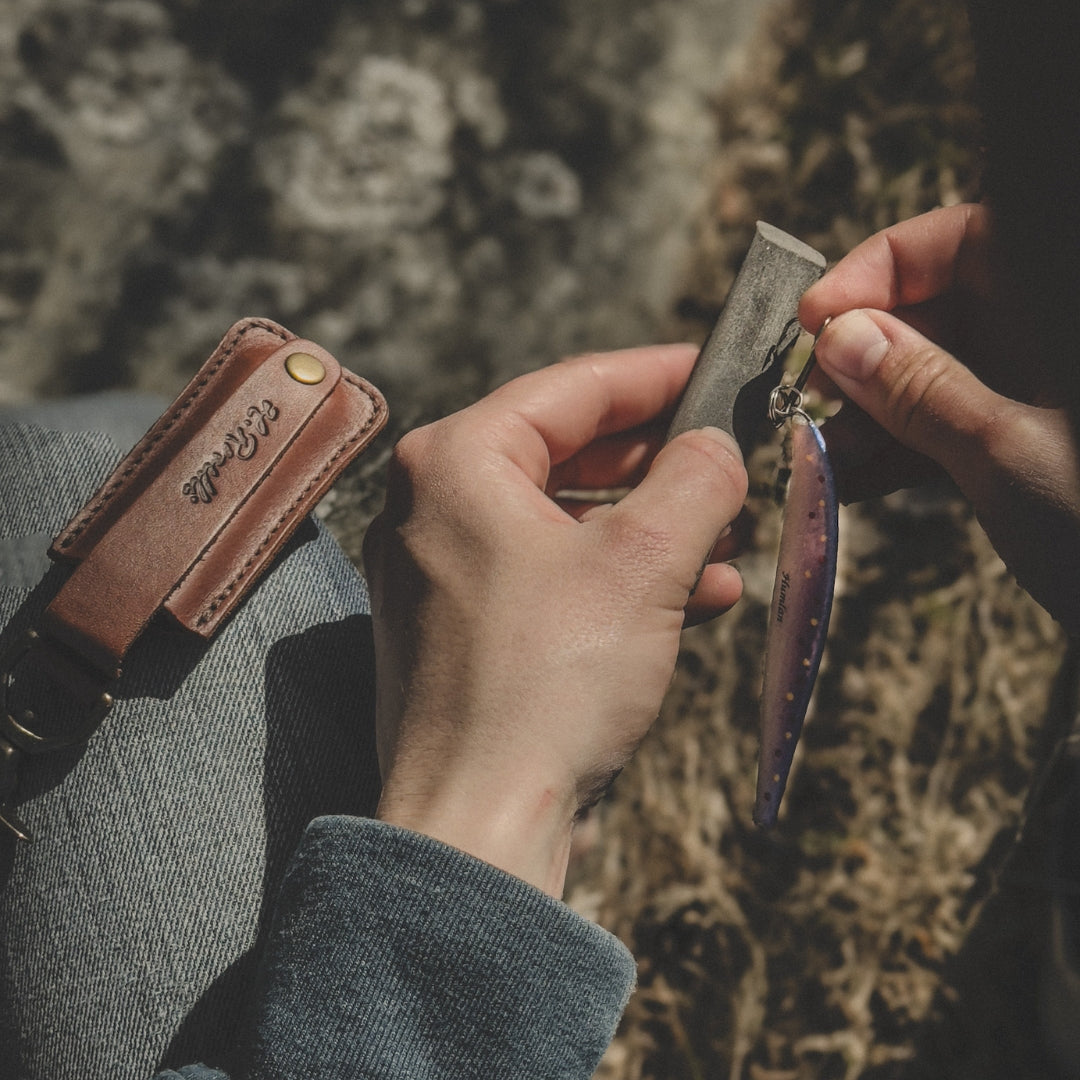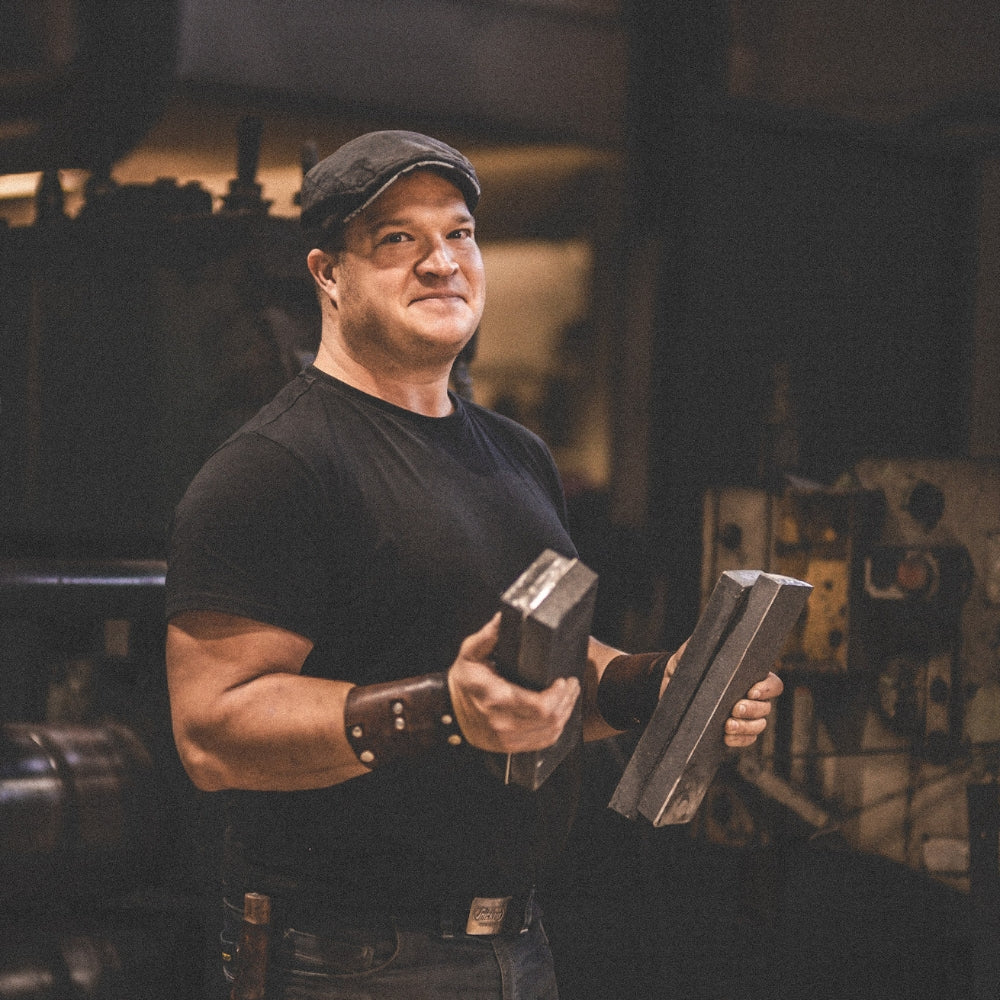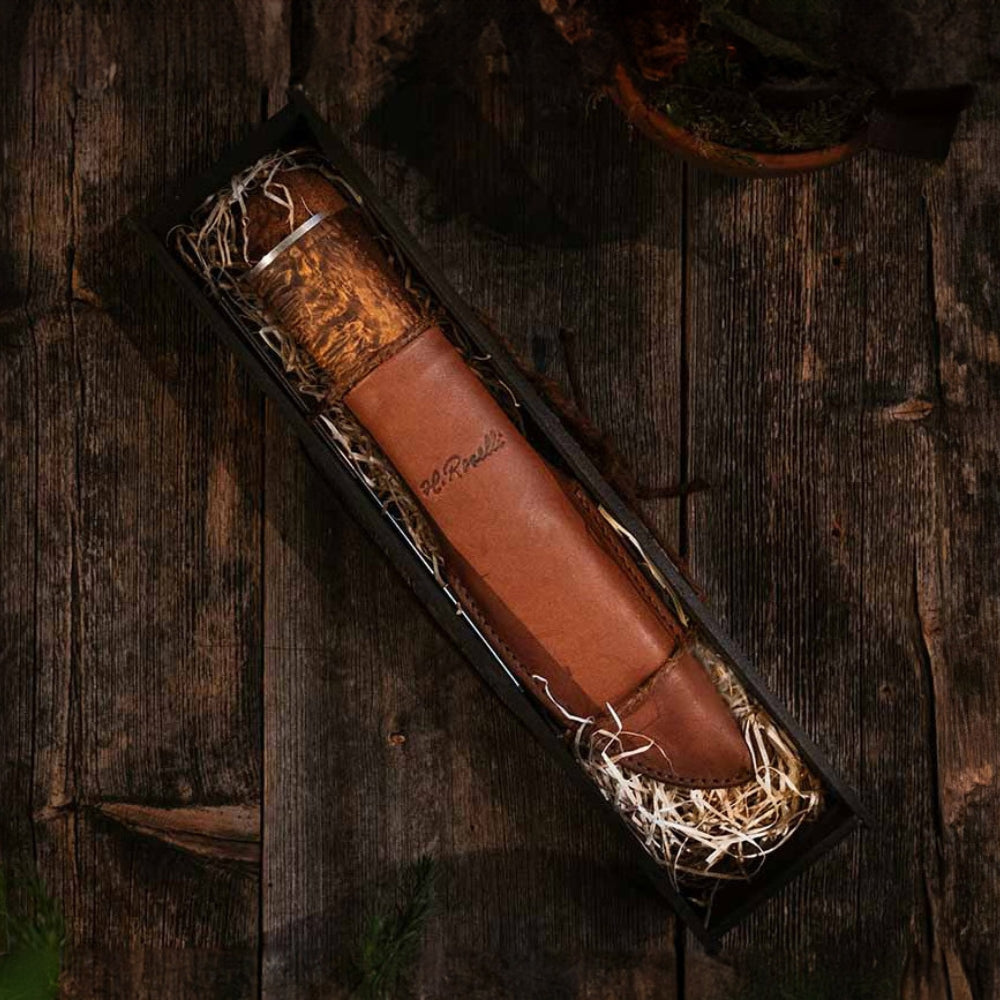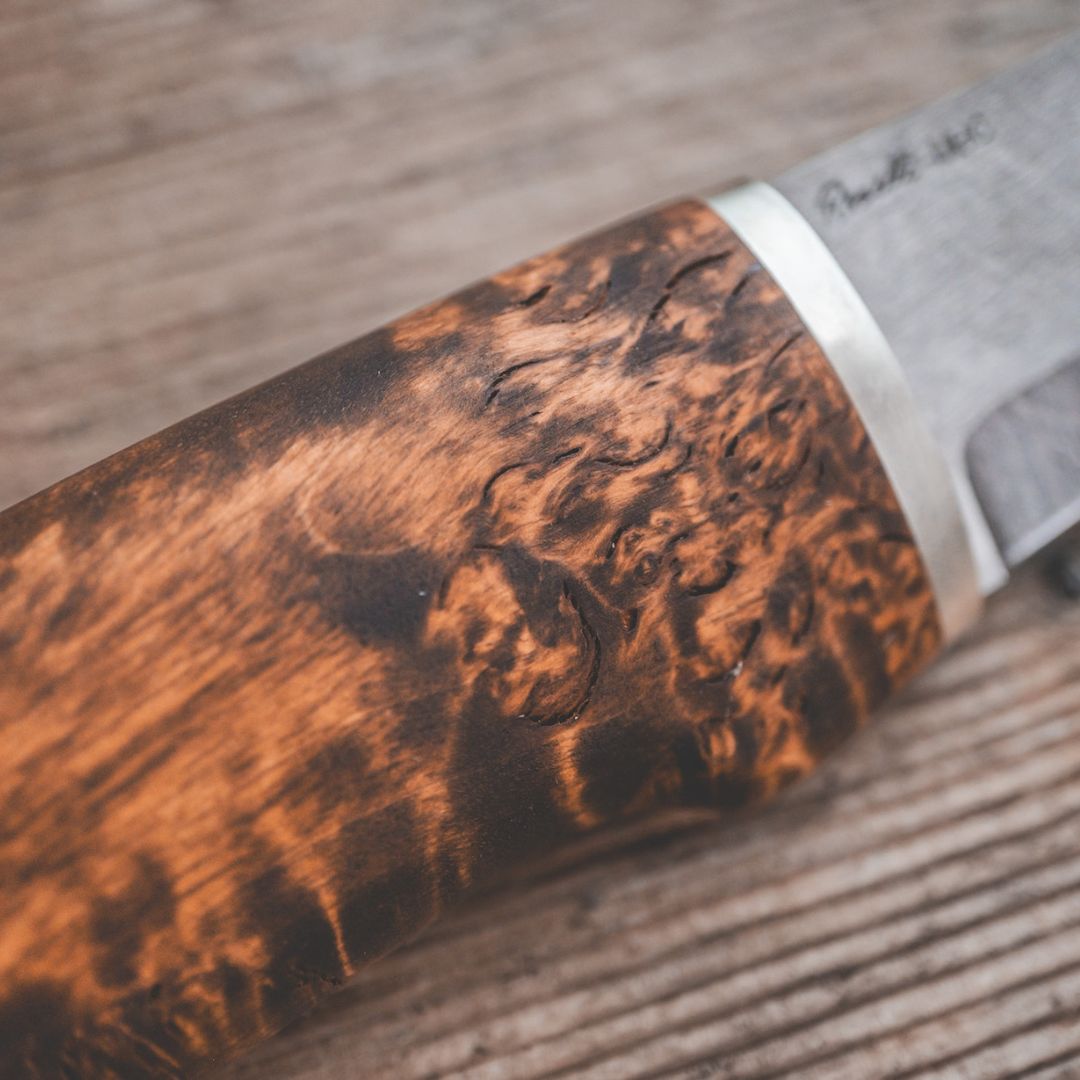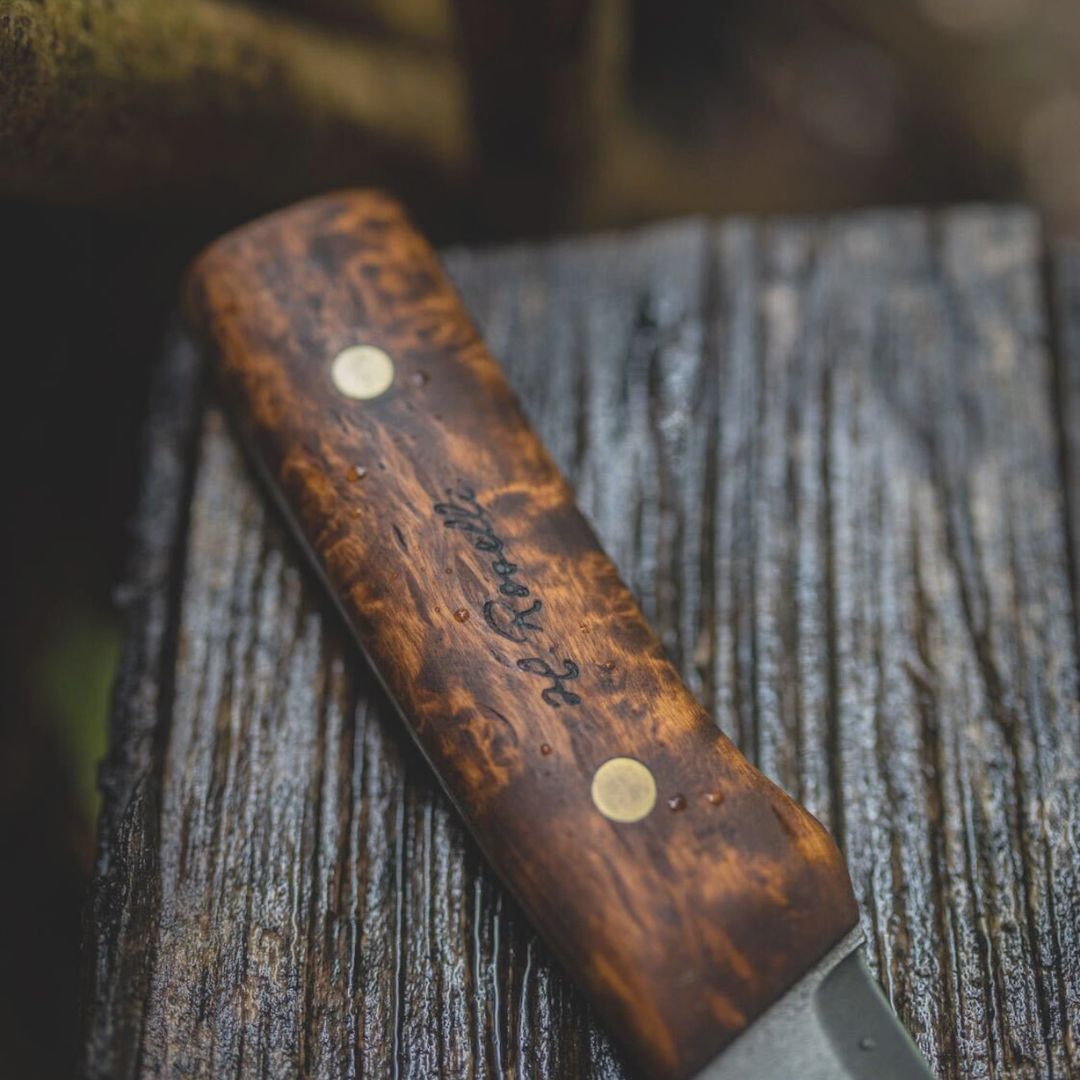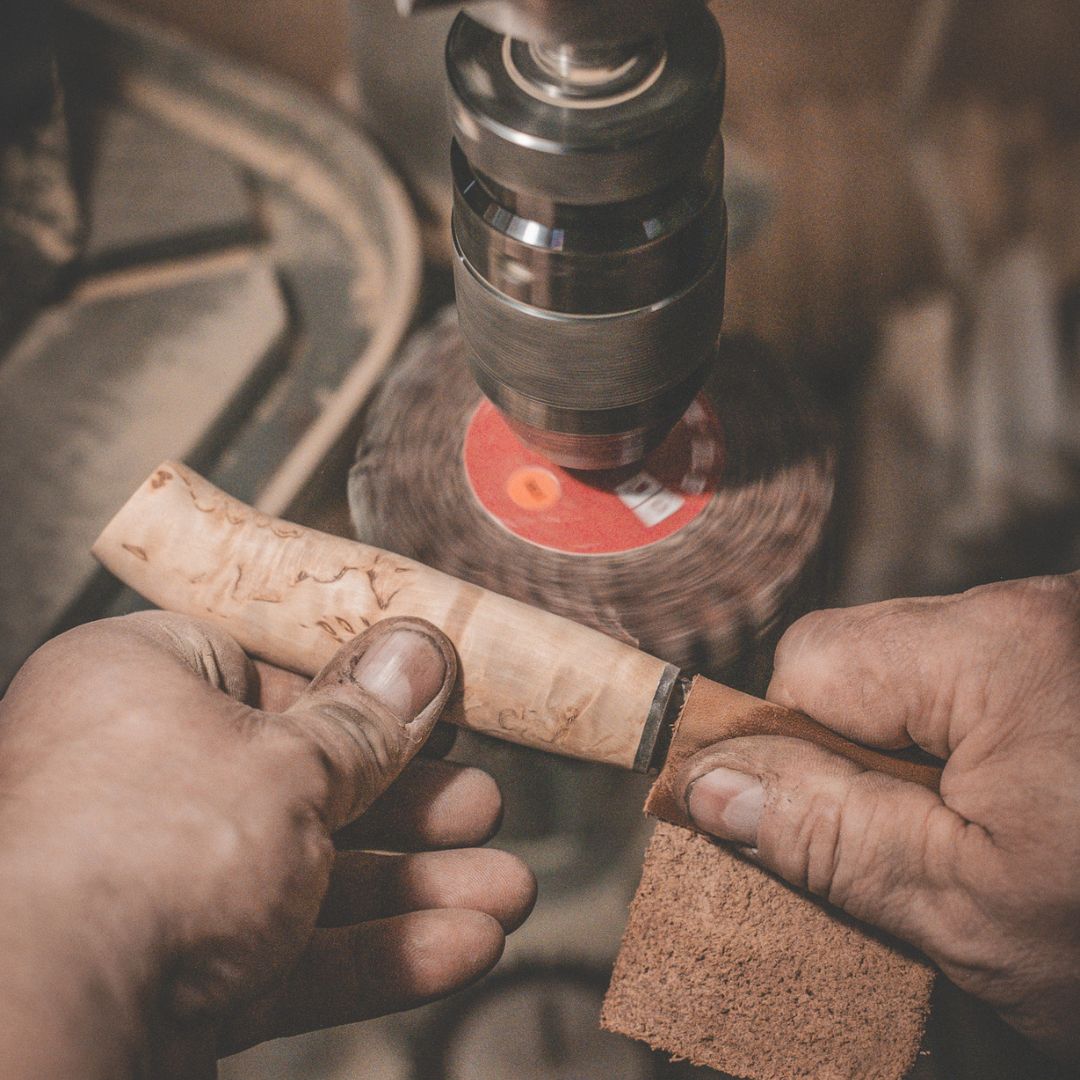Curly birch is a highly sought-after material for knife handles due to its stunning and unique grain pattern. At Roselli, we use only premium curly birch to ensure that our knife handles meet the highest standards of quality and aesthetics. This results in handles that feature an intense, eye-catching marbling, along with natural characteristics such as small cracks, pores, and holes. In this post, we explain why these features occur, how they affect the functionality of the knife, and how to best care for your handle.

Curly birch a unique wood for knife handles
How do pores and holes form in curly birch?
Curly birch (Betula pendula var. carelica) is a mutation of silver birch, growing irregularly with numerous folds, knots, and a dense, twisted grain. This unique growth pattern gives rise to small pores and holes in the wood. Here are the main factors that contribute to this phenomenon:
Growth abnormalities: Curly birch grows slowly and unevenly, which can sometimes lead to incomplete cell formation or irregular cellular arrangements, resulting in tiny pores. Air pockets and empty cell spaces: As the tree develops, inconsistencies in the cellular structure may create small air pockets or empty spaces between the cells. These appear as small cracks in the wood.
Variations in wood density: Due to its dense and twisted structure, curly birch develops differently from regular birch. Variations in density can lead to the formation of small pores or cracks. Despite these natural features, curly birch is highly valued for its decorative patterns and these pores and holes rarely affect the material’s usability in knife handles, furniture making, or instrument crafting.
How to care for a curly birch knife handle?
To maintain the beauty and longevity of your curly birch knife handle, we recommend the following steps:
Regular oiling:
Apply a small amount of linseed oil or beeswax to preserve the wood’s moisture balance.
Avoid extreme conditions:
Wood naturally reacts to temperature and humidity changes. To keep your knife in top shape, don’t leave it in water too long or expose it to extreme temperatures.
